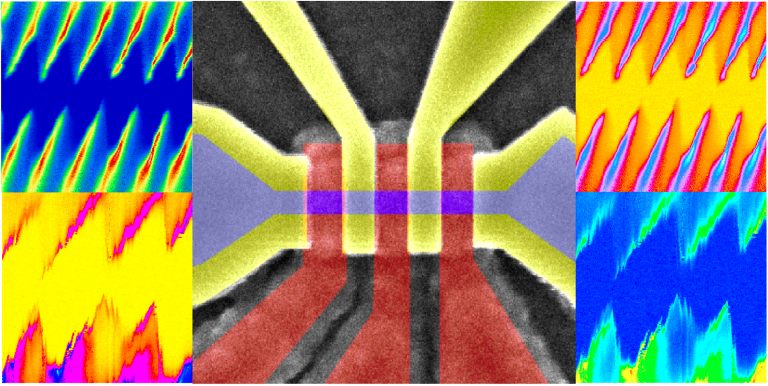Demonstrating reconfigurable ambipolar quantum dots
20 April 2021
UCL-led research presents the opportunity to combine, in a single device, long coherence times of electron spins with the electrically controllable hole spins in silicon.

Research published in Applied Physics Letters, by UCL researchers, UCL and University of Oxford spin-out Quantum Motion, and the VTT Technical Research Centre of Finland reports on ambipolar gate-defined quantum dots in silicon on insulator (SOI) nanowires fabricated using a customised complementary metal-oxide-semiconductor (CMOS) process.
Typically, electron and hole spin qubits have been achieved using different host materials and device architectures. However, ambipolar devices are able to operate in both the electron and hole regimes.
Ambipolar devices are interesting platforms as they attempt to combine the best features of both electron and hole spin qubits - hole spin qubits can be better controlled but have shorter coherence times than electron spin qubits. In addition, ambipolar devices allow researchers to explore election and hole spin qubits within the same environment.
Ambipolar quantum dots have been studied via direct electrical transport and recently, ambipolar charge sensing via single-electron and single-hole charge sensors has been demonstrated. However, the research team suggests that readout via gate-based sensors or direct dispersive readout via spin projection in double quantum dots offers more compact and scalable measurement methodologies with comparable measurement sensitivity and shorter integration time.
Corresponding author and EPSRC Centre for Doctoral Training in Delivering Quantum Technologies student, Jingyu Duan said that their work, "demonstrates several core ingredients which could be used to benchmark electron and hole spin qubits in the same silicon device." Furthermore, they report that, the availability of an in-situ gate sensor opens up the possibility of new types of studies in such ambipolar silicon devices.
This research received funding from the UK Engineering and Physical Sciences Research Council, the European Union’s Horizon 2020 research and innovation programme, and the Academy of Finland.
This article appears on the cover of Applied Physics Letters Volume 118, Issue 16, 19 Apr. 2021.
Links:
- Read the article in full at Applied Physics Letters
- Visit the Quantum Spin Dynamics webpage
- Learn more about Quantum Motion
- Apply to join our EPSRC Centre for Doctorial Training in Delivering Quantum Technology
Image:
Image adapted from cover image of Applied Physics Letters Volume 118, Issue 16, 19 Apr. 2021. Central image: False colored scanning electron microscope image of device. Surrounding images: measurement graphs.
 Close
Close

